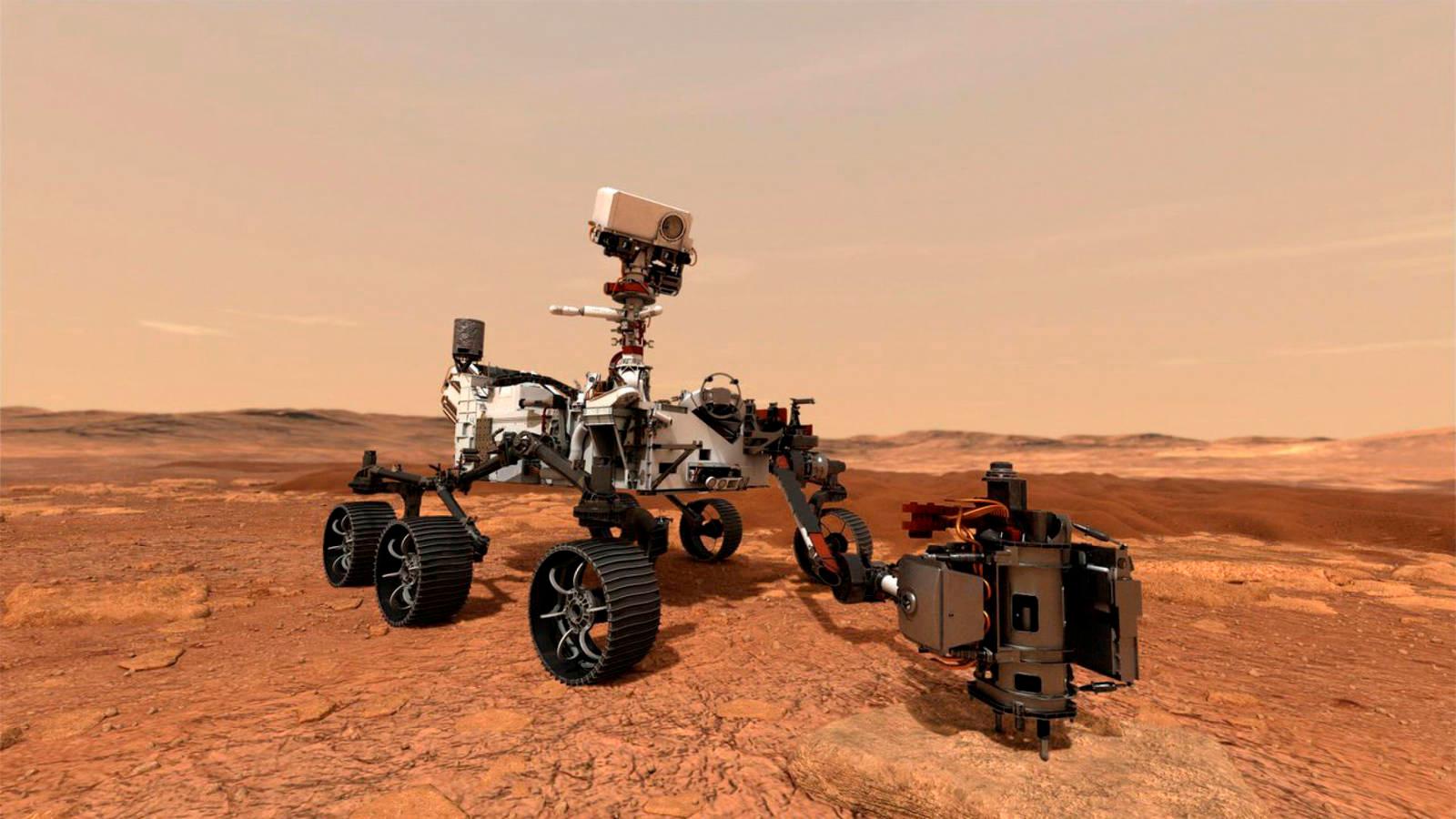
The robotic Perseverance vehicle made its maiden voyage across the surface of Mars, traveling 6.5 meters, a displacement that marks the first milestone for this mission, NASA scientists reported this Friday.
Two weeks after its arrival on the red planet, which took place on February 18, the “rover” took its “first steps” this Thursday afternoon, moving forward just over four meters, then turning about 150 degrees to the left and finally about 2 , Back 5 degrees. meter.
“Our first trip went incredibly well,” said Anais Zarifian, an engineer at NASA’s Propulsion Laboratory (JPL) who is part of the team responsible for the Perseverance mobility tests.
“We are now confident that our propulsion system is ready to go and can take us over the next two years where science takes us,” he added.
The members of the “rover” mission, whose maximum speed is 0.01 miles per hour (16 meters per hour), still faster than its predecessor Curiosity, indicated that once Perseverance fully begins its scientific investigations, it will make regular movements. will make. From about 200 meters. .
During the press conference, team members showed images of the vehicle’s tracks on the rocky surface of Mars.
Katie Stack Morgan, deputy scientist on the mission, announced today that the place in Jezero Crater where Perseverance arrived is called Octavia E. Butler, in honor of the California-born science fiction writer of the same name.
As explained today, the vehicle has carried out program updates and various tests in recent days, including the deployment of two wind sensors from the Mars Environmental Dynamics Analyzer (MEDA) instrument developed by the Spanish Astrobiology Center (INTA-CSIC).
Likewise, this week, the mission scientists first deployed the rover’s six-foot robotic arm, flexing each of its five joints for two hours.
Deputy Mission Director Robert Hogg said they are conducting an analysis to determine the best location to place the Ingenuity Mars helicopter.
He added that they plan to complete the initial tests and measurements needed before the summer before the helicopter can make its maiden flight into the sky from Mars.
In its first two weeks on the red planet, Perseverance has already sent some 7,000 photos captured by “the most advanced camera suite ever to travel to Mars,” as Morgan put it.
The Perseverance, which left Earth in July 2020, is wearing a device that will convert carbon dioxide, which makes up 96% of Mars’ atmosphere, into oxygen, for the respiration of astronauts on future manned journeys and as a propellant for rockets. to return to. Soil.
The robot is tasked with searching for ancient life, taking samples, studying the geology and climate of the red planet, and preparing the way for a manned journey.